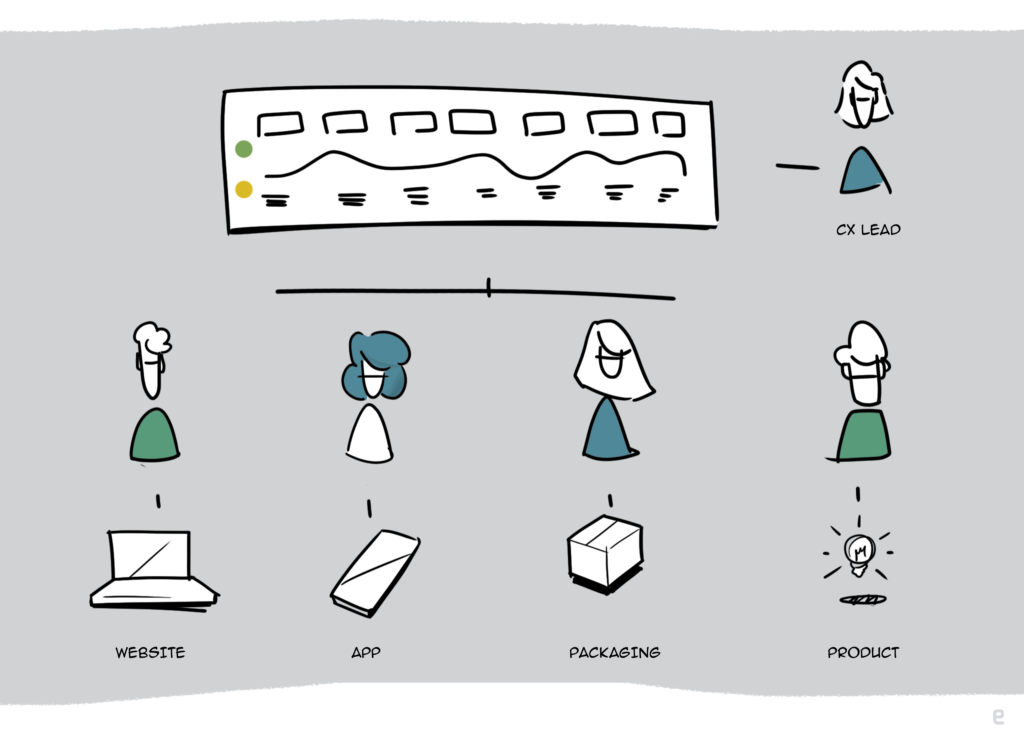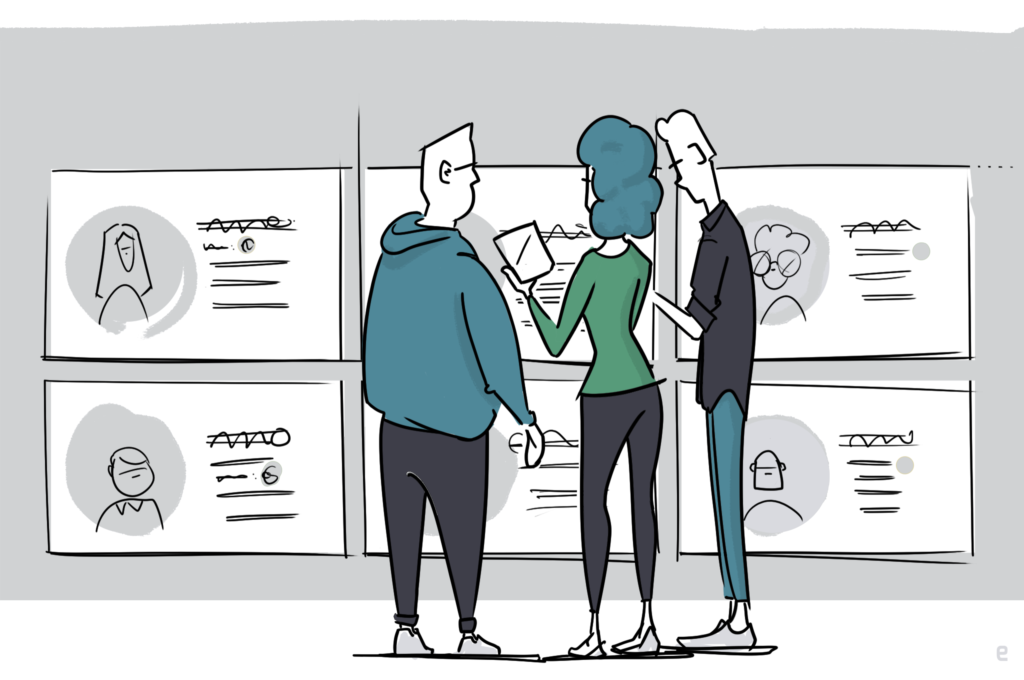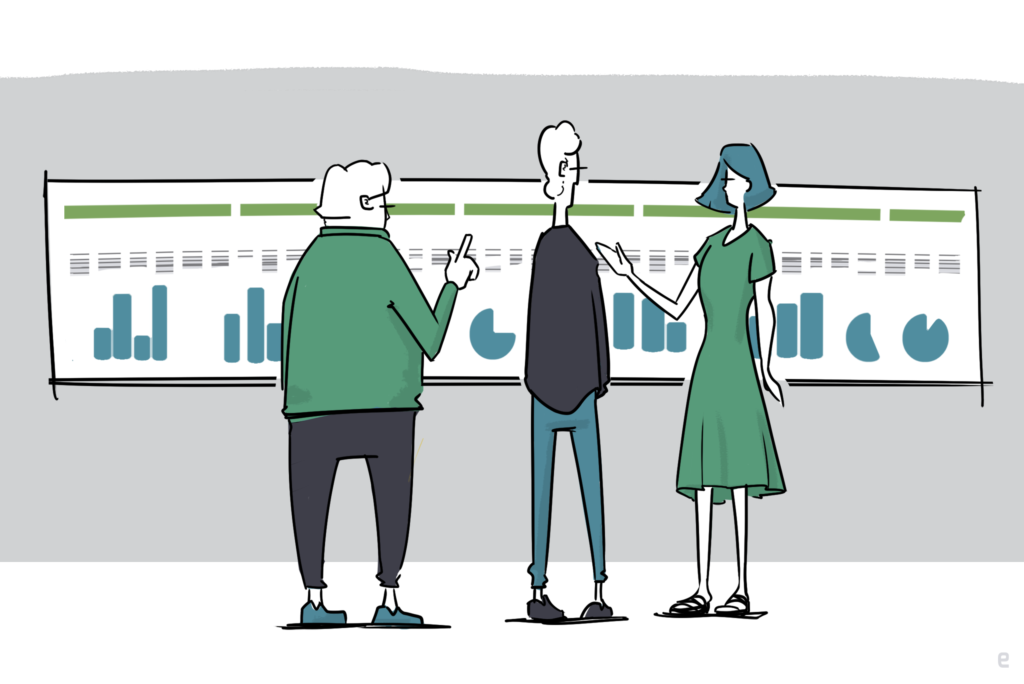Customer experience challenge 1: no clear vision and goals
Does your organization have a clear vision on customer experience? And does every employee know it? Here we immediately address one of the biggest challenges within customer experience, because the answer to these questions is usually no. A holistic view of customer experience is almost always lacking.
“We must put the customer first!” Good idea, but what does that mean? Different people and different departments have a different idea of what the vision is, what the goals are and how to get there. A lack of a shared vision also ensures that there is no shared working method. Because if everyone is customer-oriented for themselves, that does not mean that the working method is customer-oriented throughout the company. In fact, people and departments probably even (unintentionally) work against each other.
A good vision on customer experience excellence is unambiguous, is supported and promoted by the management, and gives direction to all activities within the organization. Firstly, the vision ensures a consistent, valuable customer experience at all online and offline moments when a customer comes into contact with an organization. In addition, it ensures a clear mindset, an organization that is customer-oriented in heart and soul. Everything and everyone contributes to the perfect customer experience (CX). Developing a customer-centric culture is therefore at least as important as developing a consistent customer experience. That only works if there is a clear, supported vision on customer experience.
Customer experience challenge 2: everyone and therefore no one is responsible
What happens if you don’t manage your responsibilities properly? Nothing. Or quite a lot. Either no one takes action, or everyone takes action separately. The great thing is that you immediately see who is intrinsically motivated to embrace Customer Experience. The disadvantage is that no one is in charge of the entirety of initiatives.
Customer experience excellence therefore needs an ambassador, someone with a positive attitude who can bring about change. That person can be the CMO, but increasingly also the COO and now and then you already see a CXO. It doesn’t really matter who takes the first step, the ultimate goal remains the same: a holistic approach to customer experience across channels and departments. Get rid of the silos and channel-driven control. It doesn’t matter that a first project is still somewhat department-oriented. Often it’s best to start small, as long as there is a mandate and the management supports the project. It will soon become apparent that customer experience affects the entire organization.

To prevent finger pointing and tug-of-war, insight and overview at a cross-departmental level is required. The ambassador (with mandate!) is the key figure in this. Such a CX director or CX direction team prioritizes and directs activities based on customer needs, in balance with internal goals, in order to shape joint ambitions and results.
Customer experience challenge 3: who are we actually doing it for?
To what extent do you really know who the customer is, and what his or her needs are? Has thorough research been done into the target group and its customer journeys? Or does your organization mainly rely on gut feelings and assumptions? The latter is all too often the case and you simply shouldn’t want it. With a good understanding of the customer’s needs and context, you can quickly disprove or confirm assumptions.
With a solid analysis of target groups, services and customer journeys and mapping the customer journey for overview and insight, you lay a solid foundation for developing customer-oriented business operations. And we do not mean a persona that is quickly drawn up for communication purposes, but a complete insight (qualitative and data-driven) into the needs, preferences and context of the customer.

At the same time, customer experience should not be limited to such a customer need profile and customer journey map. Then it quickly remains with a nice poster on the wall or an initiative of one isolated department or CX team. Make them an integral part of your roadmap planning and current projects. Then you approach customer experience holistically, both in the analysis phase and the realization phase. This seems like a no-brainer, but hardly anyone does it structurally.
Customer experience challenge 4: we create and measure individual interactions
What do you make or design to improve the customer experience? The Product Owner of one team optimizes the checkout flow and the Product Owner of the other team ensures that the product information is loaded faster. The focus is very narrow and synergy has hardly been considered. Agile working makes teams self-managing and productive, but also ensures that they operate independently of each other. The teams are responsible for parts of the customer journey, or for channels, but do not oversee the whole. The focus is on single interactions through a specific channel rather than the omnichannel customer experience that it delivers.
What do you measure as an organization to gain insight into the customer experience? The marketing manager measures the conversion of the website and the customer service manager measures the first call resolution. Where do those two meet? And not just those two, but all KPIs within an organization that contribute to the customer experience? Again, we often measure the effectiveness of individual customer interactions rather than the entire customer experience. If there is any measurement at all, because that too is often omitted.

And that is strange, because working data-driven is a requirement to make the right choices. Only then can you properly and well-considered respond to the customer’s expectations. Therefore, start by analyzing the customer experience and customer needs and continue on that course. Continue to measure continuously and ensure that the way you measure is consistent throughout the organization so that an overall picture is created.
The common thread: fragmentation!
You may have noticed already: the common thread of all challenges within customer experience is fragmentation. People, teams and departments operate as they see fit with their own KPIs. Of course with the best intentions, but not necessarily with the best result. Call it islands, call it silos, call it tokos: it comes down to the same thing. Initiatives are not coordinated with each other, which means they miss their target and the added value is limited. Frustration on the work floor and at the customer and it is our mission to change that.
Whether it’s fragmented initiatives or fragmented responsibilities, the answer lies in a holistic approach to customer experience. Customer experience excellence means that you organize a consistent, valuable customer experience every time a customer comes into contact with your organization. This is only possible if an organization is customer-oriented at heart and everyone and everything contributes to the same vision and goals. That goes so much further than a customer journey map. It requires Customer Experience Management (CEM) to achieve customer experience excellence.
Call it islands, call it silos, call it tokos: it comes down to the same thing.
The pillars of customer experience excellence
Customer journeys are often already being worked out and NPS is being measured in full, but a much more integrated approach is required to really achieve customer experience excellence, which in my opinion is based on four important pillars. Or even better: on the interplay of these pillars, because they reinforce each other. Here they are:
- Customer and Journey Insight: one central view of the customer, customer needs and customer journey (journey) that forms the basis for prioritizing the roadmap, in balance with commercial goals.
- Omnichannel Interaction: cross-channel customer scenarios with which (agile) teams mutually coordinate customer interactions in order to create a consistent customer experience in the realization phase.
- Vision & Way of Working: an unambiguous vision on customer experience and the working method, supported by the management, so that employees understand how they contribute to this in terms of choices, working method and culture.
- Management & KPI’s: central management of projects related to customer experience, both in terms of prioritization based on the strategy, and also measuring the impact on customer experience in relation to set NPS or customer satisfaction objectives.
Customer-oriented work is not an individual matter. It requires a corporate culture around customer-oriented collaboration between disciplines and departments. Something that cannot be achieved by treating symptoms or by one isolated ‘customer or CX’ team. Opt for an approach that focuses on a structural change in organisation-wide collaboration. Put the customer perspective at the center of your working method during all phases: analysis, realization and evaluation. But start by looking at where your organization stands in terms of maturity in customer experience (CX maturity). That is the basis for further developing the organization with the help of the four CX pillars.











